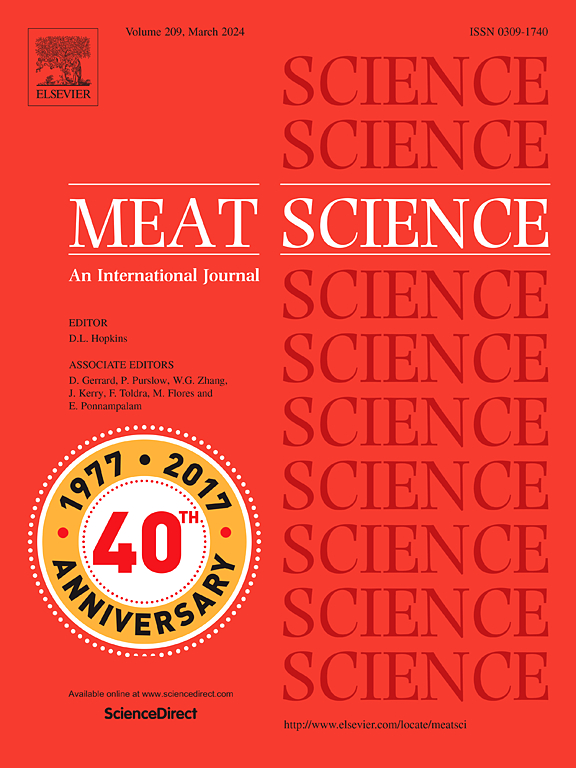拉曼光谱法是一种通过真空包装羊肉的包装材料预测羊肉中活菌总数的无创方法
IF 6.1
1区 农林科学
Q1 Agricultural and Biological Sciences
引用次数: 0
摘要
本研究利用拉曼光谱法预测真空包装和冷藏羊肉中微生物的总活菌数。研究了冷藏期和包装类型对羔羊最长腰肌(LL)的影响。使用手持式拉曼光谱设备(785 Mira, Metrohm®,Melbourne, AUS)测量每个LL,使用785±0.5 nm激光,8-10 cm−1光谱分辨率。拉曼测量后,样品LL从包装中取出并分析TVC。研究发现,拉曼光谱仅能适度预测包装内TVC (R2 = 0.29, RMSE = 1.34)。然而,拉曼光谱可以区分高TVC和低TVC(基于log 5 CFU/g)的羊肉,准确度(92.5%)和灵敏度(88.0%)相对较高。这些发现证实了拉曼光谱的应用可以提供冷冻羊肉TVC包装状态的无损信息。本文章由计算机程序翻译,如有差异,请以英文原文为准。
Raman spectroscopy is a non-invasive method to predict the total viable microbial count through the packaging material of vacuum packaged lamb meat
This study investigated the use Raman spectroscopy to predict the in-pack total viable count (TVC) of microorganism on vacuum packaged and chilled lamb meat. A total of 159 lamb longissimus lumborum muscles (LL) were sourced from an investigation into the effects of chilled storage periods and packaging types. Each LL was measured while still in its packaging using a hand-held Raman spectroscopy device (785 Mira, Metrohm®, Melbourne, AUS) using a 785 ± 0.5 nm laser, 8–10 cm−1 spectral resolution. After Raman measurements, the samples LL were removed from their packaging and analysed for TVC. It was found that Raman spectra only provided modest predictions (R2 = 0.29; RMSE = 1.34) of in-pack TVC. Raman spectra could, however, differentiate between lamb meat with high and low TVC (based on log 5 CFU/g) with relatively high accuracy (92.5 %) and sensitivity (88.0 %). These findings confirm the application of Raman spectroscopy to provide non-destructive information of the in-pack status of TVC for chilled lamb meat.
求助全文
通过发布文献求助,成功后即可免费获取论文全文。
去求助
来源期刊

Meat Science
工程技术-食品科技
CiteScore
12.60
自引率
9.90%
发文量
282
审稿时长
60 days
期刊介绍:
The aim of Meat Science is to serve as a suitable platform for the dissemination of interdisciplinary and international knowledge on all factors influencing the properties of meat. While the journal primarily focuses on the flesh of mammals, contributions related to poultry will be considered if they enhance the overall understanding of the relationship between muscle nature and meat quality post mortem. Additionally, papers on large birds (e.g., emus, ostriches) as well as wild-captured mammals and crocodiles will be welcomed.
 求助内容:
求助内容: 应助结果提醒方式:
应助结果提醒方式:


